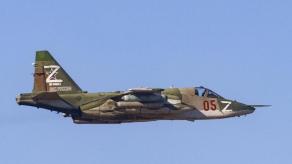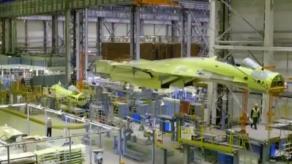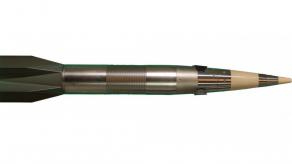A Ukrainian NASAMS operator Nikita told Norwegian broadcaster NRK about his experience operating the anti-aircraft system in the area of Kyiv, the capital of Ukraine. Having finished a three-week course of training in Norway, he returned to his homeland and entered duty with the newly-arrived NASAMS systems.
Defense Express reminds, the first NASAMS was reported to arrive in Ukraine on November 7th, 2022, and multiple more were delivered subsequently. The systems showed great results from the very beginning, taking down 100% of targets in their attack range, although the details were kept in secrecy.
Read more: Not by NASAMS Alone: How Ukraine's Capital Defends Against russian Drone Attacks

However, over this time even this modern Western air defense system suffered damage. Operator Nikita says, some of the NASAMS batteries were put out of order due to repairs.
"Of course, there are no ideal weapons that work 100 percent. No less it applies to weapons that are used as much as our NASAMS batteries do now," Nikita said.
Important to note here, the article doesn't specify whether particular components of the system were temporarily withdrawn from service or the entire system. Neither he mentioned if it was the result of an enemy strike or if the weapons just wore out due to intensive use: NASAMS have shot down over a hundred russian air targets since they arrived in Ukraine.
"It is a tough anti-aircraft weapon. If something is knocked out, the system does not stop working," assures Ole Jorgen Maao, a researcher at Royal Norwegian Air Force Academy, questioned by the NRK. Maao had himself served in a NASAMS battery.
If, for example, one or more radars are destroyed, most of the launch platforms can still fire missiles. The necessary information comes in the network.
The NASAMS itself is more of a "communications system that can also shoot down aircraft," he notes. Even if the heart of the system – the radar is destroyed, launchers still can get target information from the network of multiple connected NASAMS.

On a note from Defense Express, the same goes for launchers. Damaging one would not paralyze the system, as a battery usually consists at least of several launch platforms loaded with missiles. And being a modern Western-type air defense system, it provides that another launcher could be connected to the network as a replacement for the time necessary to repair the damaged one.
Operator Nikita also noted that NASAMS is nonetheless more stable than Soviet anti-aircraft systems, still used by Ukrainian air defense forces.
Earlier on July 12th, Norway announced it would donate a NASAMS support package to the Armed Forces of Ukraine which includes two more whole batteries and spare parts "to ensure endurance, reserve and flexibility" of the NASAMS already delivered to Ukraine, according to the Norwegian Ministry of Defense. These spare parts will also come in handy for repairing any damaged equipment.
Read more: Norway Sends Thousands of Black Hornet Microdrones: a Unique Solution for High-Intensity Infantry Warfare















